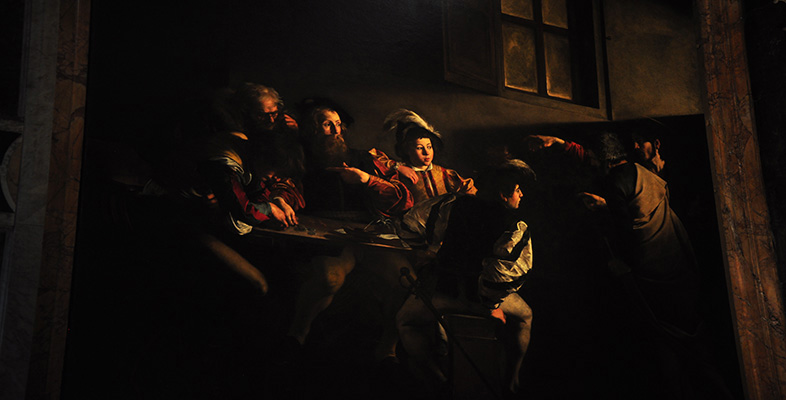2.5 Is the author dead?
When Roland Barthes (1915–80) wrote ‘The Death of the Author’ (first published 1968, reprinted in Barthes 1977), he did not mean that, like Wimsatt and Beardsley, the author had been, or should always have been, absent in the interpretation of art works. Instead his position is a historicised one: while once it might have been acceptable to refer to the author in the interpretation of an art work, now, in a post-modern world, it is not. Michel Foucault (1926–84) responded to Barthes (though not by name) in his paper ‘What is an Author?’ (1969). In it he discusses the value-laden term ‘author’ to qualify and retrieve something from Barthes's rather terminal ‘Death of the Author’.
Activity 9
Please read Foucault's ‘What is an Author?’ now (Preziosi (1998), pp. 299–314). What are the implications of Foucault's argument for writing about Caravaggio's paintings?
Click to read Foucault's ‘What is an Author? [Tip: hold Ctrl and click a link to open it in a new tab. (Hide tip)] ’
Discussion
Foucault's caution seems of direct relevance to Caravaggio studies. Any search for the identity of the author or artist brings with it another set of expectations to the interpretation of art works: the name of an author (or an artist) represents more than an identity tag. The name is a signpost pointing to a certain identity or narrative or group of artworks attached to a particular individual. Equally, the individual can also be understood as a construction made up of works associated with him or her which, when combined, creates an author or artist.
Foucault asks how we decide where an author's work begins and where it ends: ‘is everything he wrote and said, everything he left behind, to be included in his work?’ (Preziosi, p. 302). Conversely, an author's name attached to certain works will impose a particular identity on those works. Thus, by implication, Foucault suggests that a name, like ‘Caravaggio’, is not simply a label. It is ‘the equivalent of a description’ (Preziosi, p. 303) of what he does and how work associated with him has been received and categorised by historians. What Foucault suggests is that the author (or ‘author-function’) is only one of many ways of defining a subject or artwork. The definition of an author and the meaning and reception of an artwork should be continually revisited. ‘What matter who's speaking?’ he concludes. The answer to this question will change continuously. How, for example, might a work of art be interpreted if the artist who created it were unknown?
